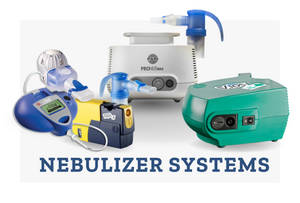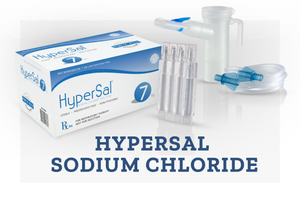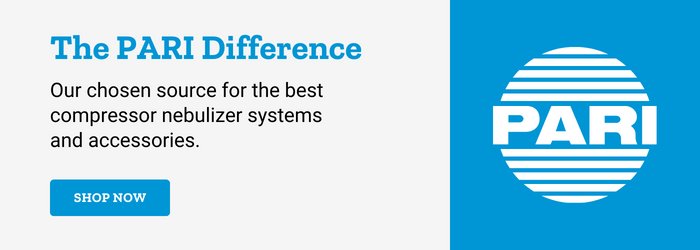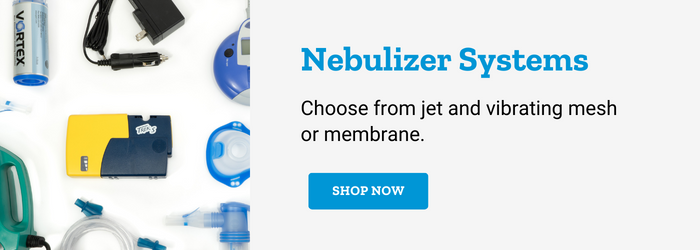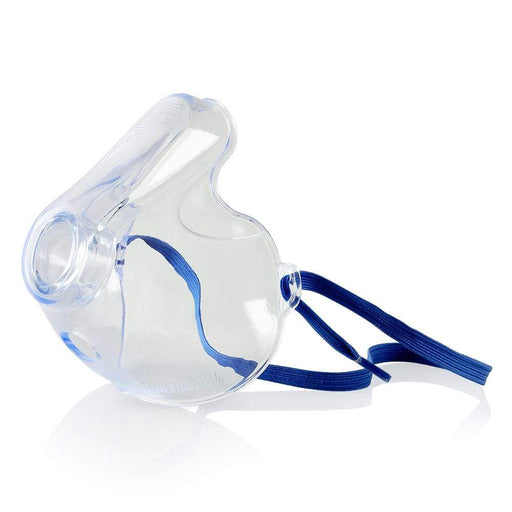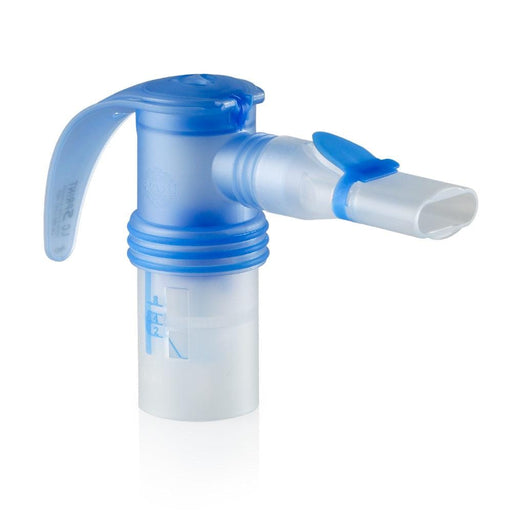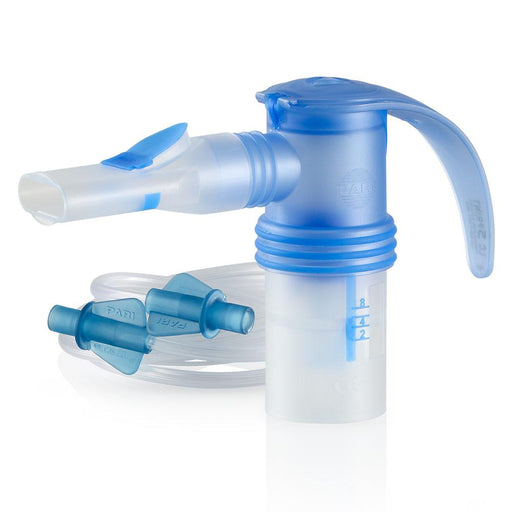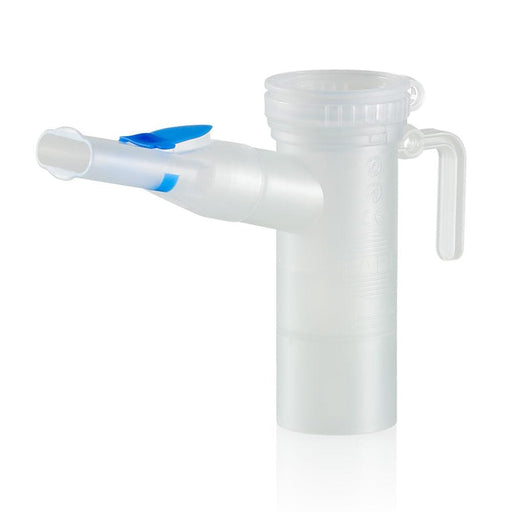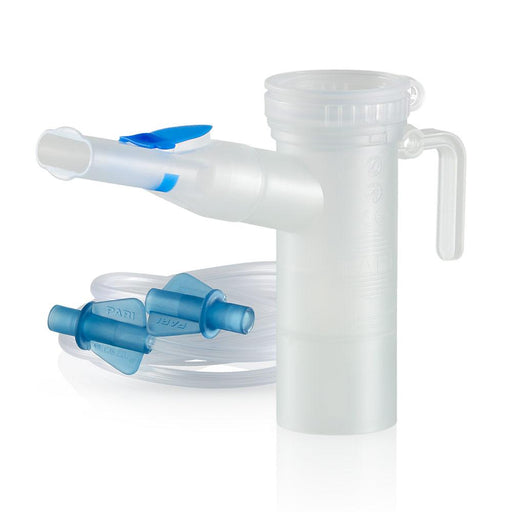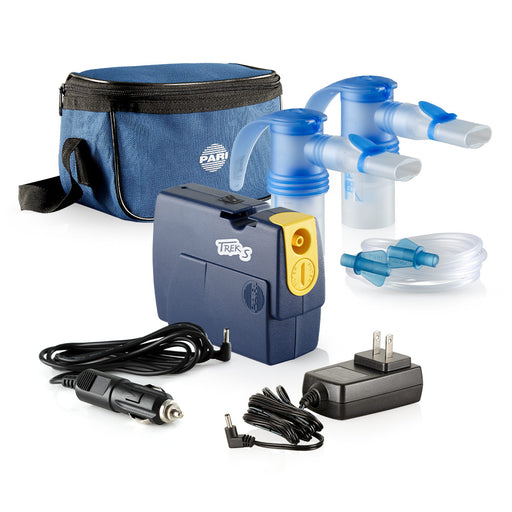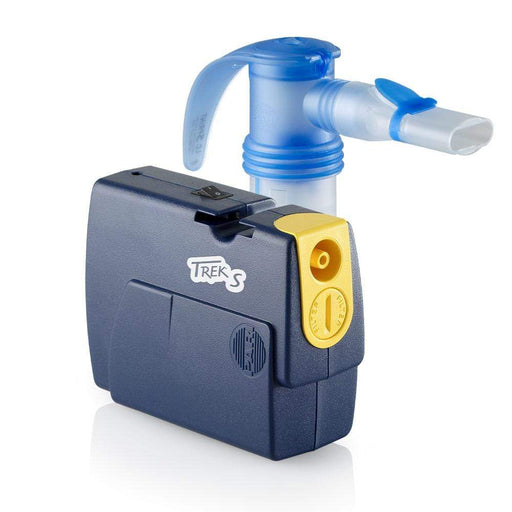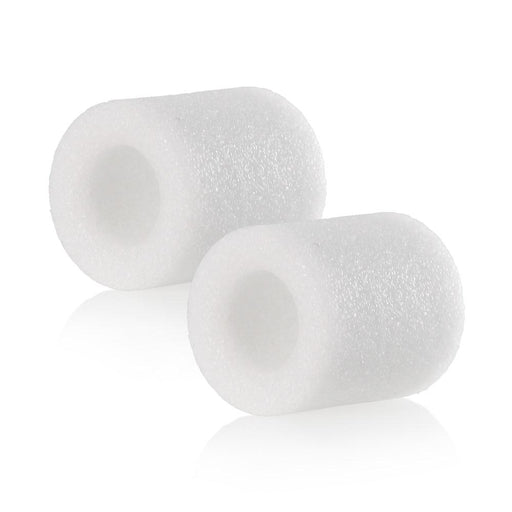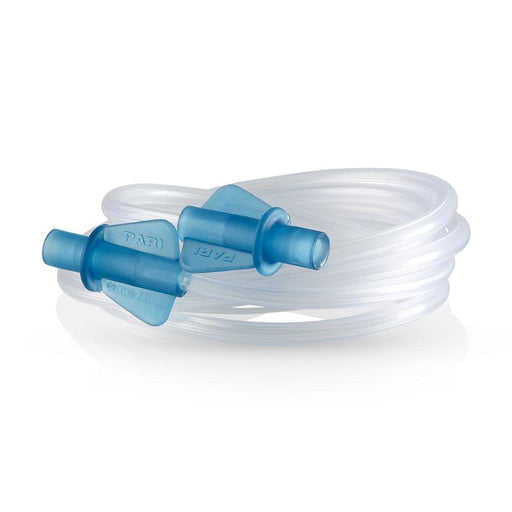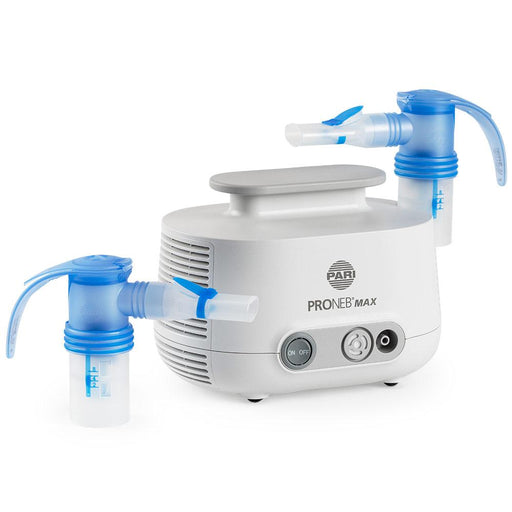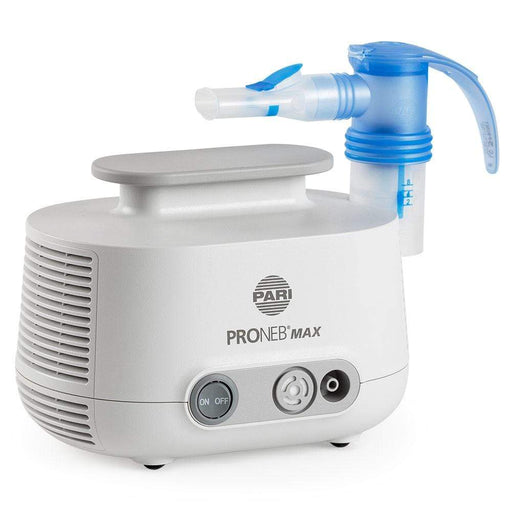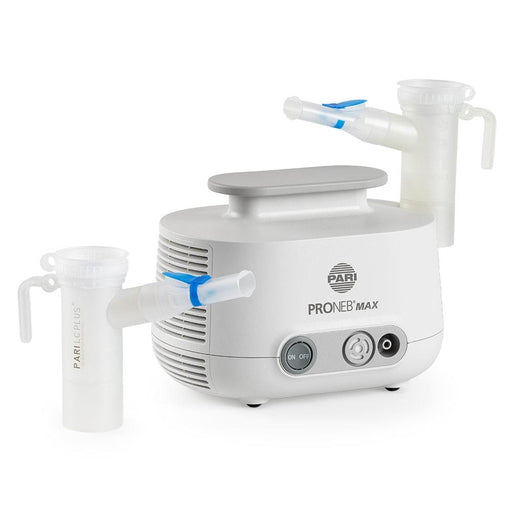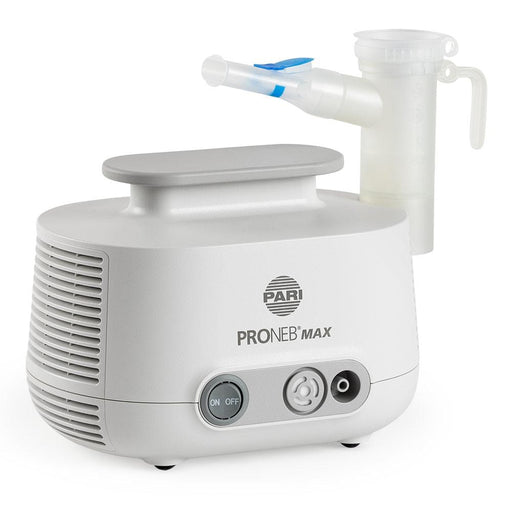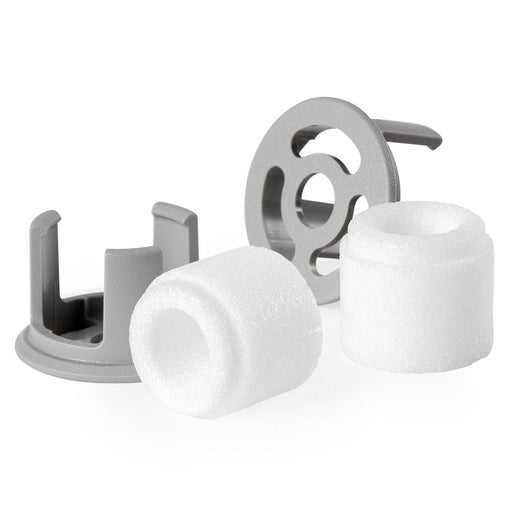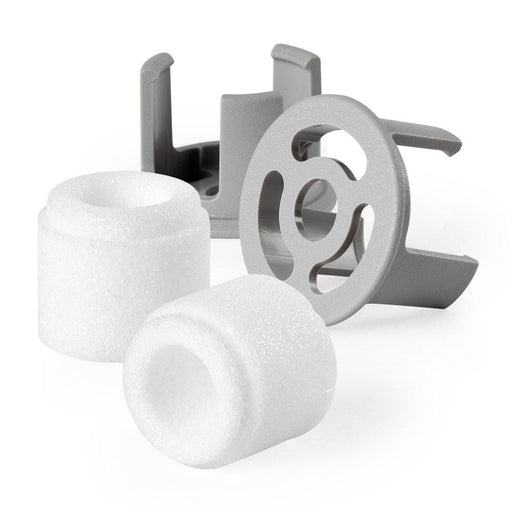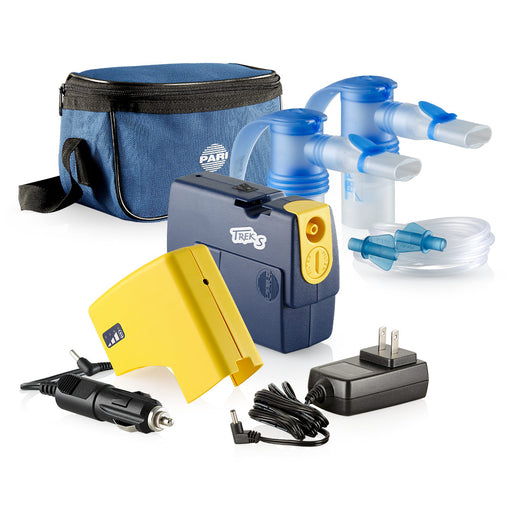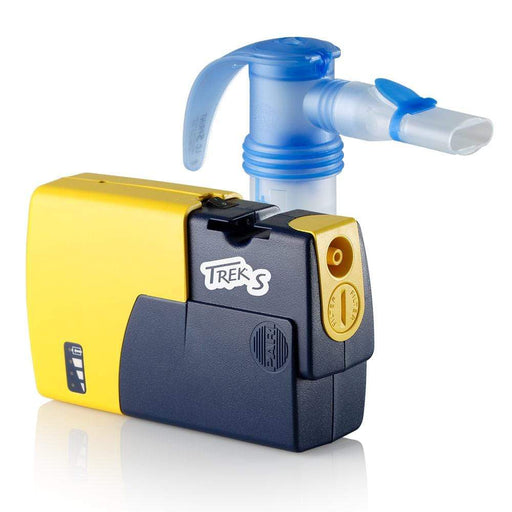
What Are the Different Types of Nebulizers?
Nebulizers are medical devices that turn liquid medicine into a mist that you can then easily inhale. For those who struggle with respiratory illnesses – like asthma and chronic obstructive pulmonary disease – nebulizers function to deliver medications deep into the lungs. Nebulizers are especially useful for those who are too young or too ill to use other devices, like metered dose inhalers.
Inhalation devices have existed for centuries and the earliest technologies were developed from papyrus around 1554 BCE. Technology advanced quickly from the 1850s to the 1950s, as innovators learned how to atomize medicine in liquid form and develop spray inhalers. People with asthma began using handheld atomizers in the early 1900s, and the first pressurized metered-dose inhaler hit the market in 1955.
Nebulizers have come a long way since the 1950s, and patients can now choose between a variety of table-top models that make it easier to administer their breathing treatments at home. Patients also have access to portable and travel-friendly nebulizers – like the PARI Trek S Portable Nebulizer System – which can be used on the go. Many adult patients prefer to use a handheld nebulizer, while nebulizers with masks are available for children who cannot use a mouthpiece.
The newest nebulizers operate silently to create medicated aerosols for patients to inhale. Nebulizers today produce fine aerosol particles that you can easily inhale deep into your lungs, where the medication then works to treat asthma, COPD, cystic fibrosis, and other respiratory conditions.
Types of Nebulizers
There are three main types of nebulizers available today: jet, ultrasonic, and vibrating mesh or membrane. Each system produces medicated aerosol in a slightly different way to deliver these particles deeply into the lungs. Other differences between these types of nebulizers is their efficiency and the amount of medication they deliver to the lungs.
Nebulizer medications come in different formulations. Many come in the form of a solution, while some are suspensions. In a solution, the drug mixture is completely dissolved in the formulation, which makes it easy to aerosolize. Drug particles are not completely dissolved in a suspension formulation, which makes it difficult for some nebulizer types to aerosolize.
Ultimately, the efficiency of a nebulizer depends on how much of the drug can reach the lungs. Residual volume, or the amount of unused medication sitting in the medicine cup at the end of your treatment is one consideration. Some types of nebulizers leave very little residual volume, which makes them more efficient because almost all of the drug is delivered to the lungs.
Here is a complete breakdown of the different types of nebulizers to choose from, to help patients find the system that is right for them.
What Is a Jet Nebulizer?
Jet nebulizers use compressed gas to make medicated mist. These nebulizers deliver this gas through a pressurized stream of air, down a narrow tube or channel, and through an opening to create a jet. The movement of the air creates a vacuum that pushes the liquid medication out of the nebulizer.
Delivering compressed gas through a jet causes an area of negative pressure that draws the liquid medicine up the tube or channel, in what scientists refer to as the Bernoulli effect. The air flowing forces the solution onto the surface of a baffle. The baffle breaks down the solution into small droplets, measuring 1 to 5 micrometers, which a patient can easily inhale.
Jet nebulizers are inexpensive, easy to use, and can deliver a variety of medications that cannot be administered by handheld inhalers.
Ultrasonic Nebulizers
Ultrasonic nebulizers do not use airflow to form an aerosol. Instead, these nebulizers use ultrasonic sound waves to create a vibration that breaks down the liquid into tiny particles.
More specifically, these nebulizers use a vibrating piezoelectric crystal to create ultrasonic sound waves. Certain crystals are piezoelectric, which means they generate an electric charge when compressed or struck. These piezoelectric crystals oscillate (or vibrate) at different rates depending on their size. As the crystal vibrates back and forth, it generates an electrical charge.
A vibrating piezoelectric crystal can produce cavitation, which is the formation of vapor bubbles at the surface of the liquid. Cavitation causes ultrasonic waves, measuring 1.63 MHz, which generate aerosols. A fan or the patient’s own inhalation then draws the aerosol into their lungs.
The particles delivered by ultrasonic nebulizers are larger, but more uniform in size compared to those delivered by jet nebulizers.
Vibrating Mesh or Membrane Nebulizers
Some consider vibrating mesh or membrane nebulizers to be a type of ultrasonic nebulizer, but there are important differences between the two. Like ultrasonic nebulizers, mesh nebulizers are also driven by a piezo element, but they use the energy of ultrasonic frequencies to vibrate mesh to generate a dense aerosol.
As the liquid passes through multiple holes in the mesh, the vibrating action generates medicated aerosol. In contrast, ultrasonic nebulizers produce ultrasonic waves directly into the solution, which produces aerosol on the surface of the liquid.
Mesh nebulizers present a number of advantages, as well. Mesh nebulizers produce consistent aerosol particles that reach deep into the lungs. Some mesh nebulizers are highly specialized, and these devices allow for custom adjustments to increase the delivery efficiency of specific drugs. For example, the size of the mesh pores, the aerosol chamber, and the reservoir can be adjusted based on the characteristics of a specific drug formulation. The output rate can be adjusted for different drugs to improve the speed of delivery of various aerosol medications to patients.
Patients may prefer mesh nebulizers because these devices are fast, quiet, portable, and easy to use. Mesh nebulizers also have a self-contained power source.
Mesh nebulizers do have some drawbacks, though. While they can handle thicker solutions better than ultrasonic nebulizers, mesh nebulizers can clog when nebulizing viscous solutions if not properly cleaned or maintained. If you choose a mesh nebulizer, it will be important to follow the manufacturer’s instruction for proper cleaning to prevent any clogging.
Ultrasonic Nebulizers vs Jet Nebulizers vs Mesh Nebulizers
While jet nebulizers are often a preferred method of treatment for those with pulmonary and respiratory diseases, the machines are usually larger and require a source of power to function. Small-volume ultrasonic nebulizers, however, are smaller a more convenient for travel. Ultrasonic nebulizers have many limitations compared to jet nebulizers. Unlike jet nebulizers, they cannot deliver suspensions. Therefore, they should not be used with suspension drug formulations.
Since both ultrasonic and mesh nebulizers use ultrasonic waves to create the medicated mist, many people confuse these two different types of nebulizers. This is especially true when it comes to the delivery of suspension formulations. Some assume that, like ultrasonic nebulizers, mesh nebulizers cannot deliver suspensions.
When you choose a PARI nebulizer from Nebology, you’re buying clinically proven systems from a trusted name. With our nebulizers – like the PARI eRapid Nebulizer System – treating respiratory diseases is quick, comfortable, and effective. For more information on the various types of nebulizers and which system is best for you, speak with your respiratory professional.
SHOP CLINICALLY PROVEN NEBULIZER SYSTEMS & SUPPLIES
-
PARI LC Adult Aerosol Mask with Pro-Vent Technology
Original price $5.00 - Original price $5.00Original price$5.00$5.00 - $5.00Current price $5.00In stockOriginal price $5.00 - Original price $5.00Original price$5.00$5.00 - $5.00Current price $5.00 -
PARI LC Sprint Reusable Nebulizer Cup & Tubing
Original price $14.95 - Original price $14.95Original price$14.95$14.95 - $14.95Current price $14.95In stockOriginal price $14.95 - Original price $14.95Original price$14.95$14.95 - $14.95Current price $14.95 -
PARI LC Plus Reusable Nebulizer Cup & Tubing
Original price $14.95 - Original price $14.95Original price$14.95$14.95 - $14.95Current price $14.95In stockOriginal price $14.95 - Original price $14.95Original price$14.95$14.95 - $14.95Current price $14.95 -
PARI Trek S Portable Nebulizer System with LC Sprint
Original price $79.00 - Original price $185.00Original price$79.00 - $185.00$79.00 - $185.00Current price $79.00In stockOriginal price $79.00 - Original price $185.00Original price$79.00 - $185.00$79.00 - $185.00Current price $79.00 -
Filters for PARI Vios, Ultra II, and Trek S System - 2 Per Package
Original price $8.45 - Original price $8.45Original price$8.45$8.45 - $8.45Current price $8.45In stockOriginal price $8.45 - Original price $8.45Original price$8.45$8.45 - $8.45Current price $8.45 -
PARI Wing Tip Tubing
Original price $7.00 - Original price $7.00Original price$7.00$7.00 - $7.00Current price $7.00In stockOriginal price $7.00 - Original price $7.00Original price$7.00$7.00 - $7.00Current price $7.00 -
PARI PRONEB Max Nebulizer System with LC Sprint
Original price $99.00Original price $99.00 - Original price $99.00Original price $99.00Current price $81.99$81.99 - $81.99Current price $81.99In stockOriginal price $99.00Original price $99.00 - Original price $99.00Original price $99.00Current price $81.99$81.99 - $81.99Current price $81.99Sale -
PARI PRONEB Max Nebulizer System with LC Plus
Original price $99.00Original price $99.00 - Original price $99.00Original price $99.00Current price $81.99$81.99 - $81.99Current price $81.99In stockOriginal price $99.00Original price $99.00 - Original price $99.00Original price $99.00Current price $81.99$81.99 - $81.99Current price $81.99Sale -
Filters for PARI PRONEB Max System - 2 Per Package
Original price $9.00 - Original price $9.00Original price$9.00$9.00 - $9.00Current price $9.00In stockOriginal price $9.00 - Original price $9.00Original price$9.00$9.00 - $9.00Current price $9.00 -
PARI Trek S Portable Nebulizer System with LC Sprint & Battery Pack
Original price $185.00 - Original price $185.00Original price$185.00$185.00 - $185.00Current price $185.00In stockOriginal price $185.00 - Original price $185.00Original price$185.00$185.00 - $185.00Current price $185.00

